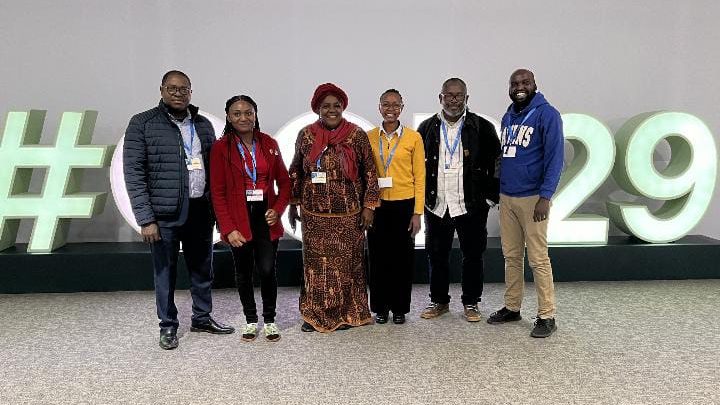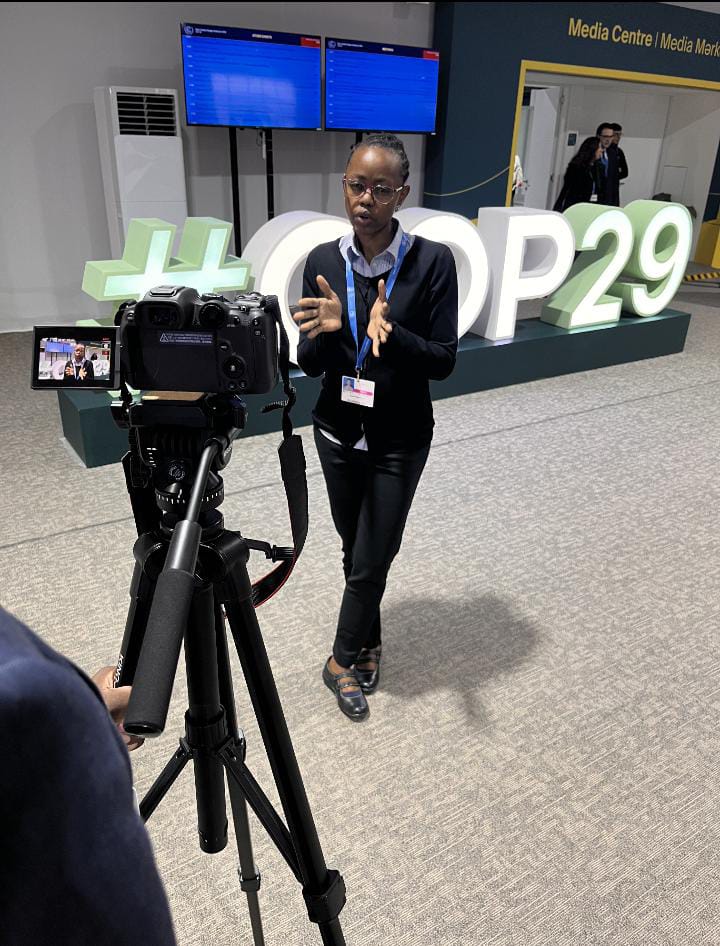
Last year, I attended the 29th Conference of the Parties (COP29) to the United Nations Framework Convention on Climate Change (UNFCCC) with the goal of witnessing the final decision-making on the New Collective Quantified Goal for climate finance. But I didn’t get to see it happen there. Instead, the decision reached me while I was in transit at an airport on my way home—on the morning of the second extended day to the conference.
What is a Conference of Parties (COP)?
A COP is an annual meeting where countries that are parties to the United Nations Framework Convention on Climate Change (UNFCCC) come together to discuss and negotiate climate change action. The UNFCCC has 198 member countries, each sending a delegation to the COP. Alongside them are Observer Organizations like Non-Governmental Organisations, and other non-party stakeholders, such as the media, who also send representatives to participate.
COP meetings are critical for addressing global climate issues. At these conferences, decisions are made on topics like emission reductions, financial support for climate action, and adapting to the impacts of climate change. These meetings take place in a different location every year. COP29 took place in Baku, Azerbaijan, in November 2024, with a major focus on climate finance. One of the key objectives was to revise the long-standing goal for developed countries to mobilize USD 100 billion annually for climate action, with the African Group of Negotiators pushing for a minimum of USD 1.3 trillion each year.
The New Collective Quantified Goal on Climate finance
The Sixth Conference of the Parties serving as the meeting of the Parties to the Paris Agreement (CMA6) was tasked by COP26 with establishing a new collective quantified climate finance goal to be delivered before 2025. The purpose of the goal as defined in the COP29 decision, is to contribute to accelerating the achievement of Article 2 of the Paris Agreement of holding the increase in the global average temperature to well below 2 °C above pre-industrial levels and pursuing efforts to limit the temperature increase to 1.5 °C above pre-industrial levels, increasing the ability to adapt to the adverse impacts of climate change, among other important factors. COP29 set the new target to at least USD 300 billion per year by 2035, beginning in 2025.
The process leading to this decision
Unlike the previous USD 100 billion goal which was determined by a select few presidents during COP15 in Copenhagen, the development of the new collective quantified goal followed a more inclusive and consultative process over a period of three years. In 2021, an ad hoc work program was established to facilitate technical discussions to shape the new goal. Its committee invited submissions from both Party and Non-Party stakeholders, which were synthesized to guide decision-making.
The Committee held a total of eleven Technical Dialogues throughout the process. In 2024, the Committee was tasked with drafting a negotiating text, to include quantitative and qualitative elements, transparency arrangements, and cross-cutting issues. Each year, the Ad hoc Committee presented its progress to the COP for further guidance.
During COP29, this work by the Committee was taken over by the Parties and both formal and informal negotiations took place, yet little progress was made during the first week. On the eve of the intended conference closure, the first text was produced without a quantum figure. Frustrated by the deadlock, negotiation blocks representing vulnerable communities held a joint media conference, urging developed countries to propose a figure as a basis for further negotiations. On planned close date of the conference, a figure of USD 250 billion was presented, which was adjusted after intense negotiations that went deep into the following two nights, to USD 300 billion.
Why Climate Finance is Crucial for Africa
Africa has played a minimal role in driving the climate crisis but is facing the brunt of its growing impacts. A large portion of the population in Africa relies on natural resources, with rain-fed agriculture being the main source of food and income. Climate change is posing a significant threat to food security across the continent, yet the ability to adapt remains severely limited.
Climate finance flowing into Africa is far too low to address these challenges. According to the Global Centre on Adaptation, Africa needs around USD 53 billion annually to fund climate adaptation, but in 2021-2022, the continent received just USD 13 billion—80% of which was in the form of loans.
The outcome of COP29 was unsurprisingly disappointing for Africa, as the competition for available climate finance continues to disadvantage the continent.
Attending COP29

Although I was able to attend only a few negotiation sessions, participating in the conference provided a valuable opportunity to connect with representatives from other vulnerable countries. It was enlightening to learn about the positive changes they’re driving in their communities and to share insights from Uganda, the country I represent. I was also able to engage in key discussions. For example, in 2025, the Paris Committee on Capacity Building of the UNFCCC will focus on building capacity for developing bankable projects and will be seeking submissions of successful capacity-building initiatives.
I am truly grateful to the African Group of Negotiators Expert Support (AGNES) and its partners, the African Development Bank and the Climate Investment Fund, for making this experience possible.
Susan Nanduddu is the Executive Director of the African Centre for Trade and Development based in Kampala, Uganda. She is part of the inaugural cohort for the Empowering African Women as Transformative Leaders in Climate Change.
Moving ahead
By 2030, Africa must reshape the narrative surrounding climate finance flows into the continent. The review of the NCQG decision in 2030 should catalyze significant financial inflows, ideally doubling the current amounts. To achieve this, African leaders must unite under the African Union, ANPCC, and other relevant frameworks to develop strategies that strengthen the capacity to craft fundable proposals across various funding channels.
Africa requires a critical mass of experts capable of writing successful proposals for grants, equity, and concessional loans. Commercial loans should be decisively dissociated from. It is promising that AGNES is dedicated to building this capacity within Africa. Women, in particular, should seize these skills and lead the charge for transformative change.
This blog was first published: AGNES Website
